How to Grow Radishes: A Beginner’s Guide to a Crisp, Crunchy Harvest
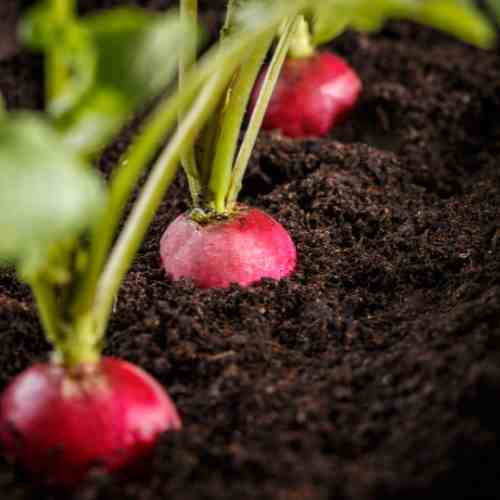
Radishes are the unsung heroes of the vegetable garden. They grow quickly, require little maintenance, and add a burst of flavor and crunch to meals.
Whether you’re planting your first seed or refining your green thumb, this guide will show you exactly how to grow radishes successfully.
Let’s dig in—pun intended!
Get our Gardening Buddy and find veggies that fit your conditions best.
You Can Grow It!
1. Pick the Right Radish Variety
Radishes come in a surprising range of varieties, each offering something unique in terms of flavor, size, and growing conditions. Choosing the right one for your garden is the first step to success.
Popular Radish Varieties
- Cherry Belle: The classic round red radish, ready in about 25 days. Perfect for salads and snacks.
- French Breakfast: An elongated radish with a mild flavor, great for breakfast toast or crudité platters.
- Daikon: A long, white radish that thrives in cooler weather and is ideal for stir-fries and pickling.
- Watermelon Radish: Stunning pink interiors with a mild, slightly sweet taste. They’re Instagram-ready and delicious.
Climate and Seasonality
Spring radishes are best for quick-growing, warmer conditions, while winter radishes are better suited for cooler temperatures and longer growing seasons. If you’re unsure which variety to try, mix and match a few to see what thrives in your local climate.
Pro Tip: Look for “heirloom” varieties if you want something a little different. These often come with unique flavors and beautiful colors.
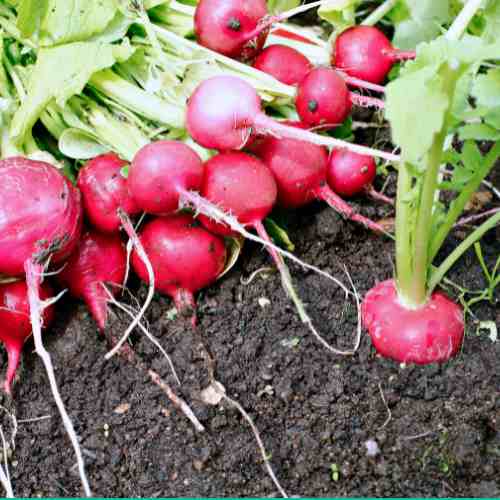
2. Find the Perfect Spot
Radishes are not fussy, but they have some preferences when it comes to location. A happy radish grows quickly and evenly, so choosing the right spot matters.
Sunlight Requirements
Radishes love full sun but can tolerate partial shade. Aim for a location that gets at least 6 hours of sunlight daily. Too much shade will encourage leafy tops at the expense of root development.
Space Considerations
Because radishes don’t need much space, they’re great for urban gardening. You can grow them in raised beds, containers, or even window boxes. Just make sure your soil depth is at least 6 inches to allow the roots to grow freely.
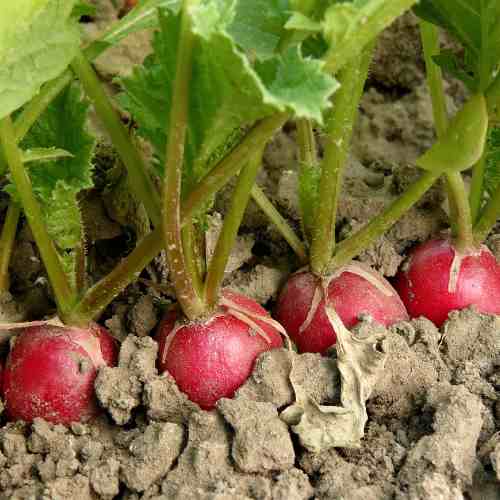
3. Prepare the Soil
Healthy soil is the foundation of any thriving garden. For radishes, loose and nutrient-rich soil is essential to avoid oddly-shaped or stunted roots.
How to Prepare the Soil
- Remove Rocks: Rocks and compact soil can lead to deformed radishes. Clear the area thoroughly.
- Add Nutrients: Mix in organic compost to enrich the soil. Radishes don’t need heavy fertilization, so keep it balanced.
- Check pH Levels: Radishes prefer a slightly acidic to neutral soil (pH 6.0-7.0). Test your soil and adjust if needed with lime (to raise pH) or sulfur (to lower it).
Container Gardening
If you’re growing radishes in pots, choose a container with drainage holes and fill it with a quality potting mix. Avoid garden soil, as it can become compacted in pots.
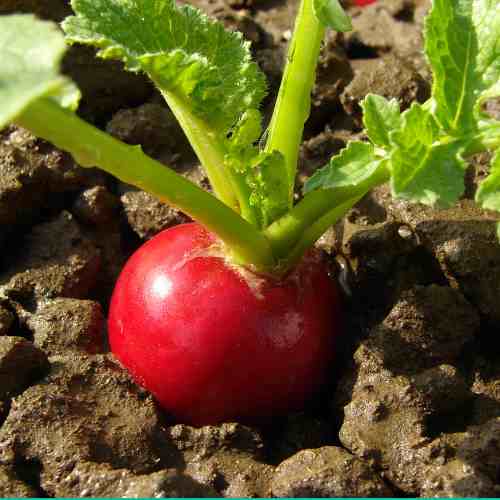
4. Sow Your Radish Seeds
Radishes are best grown directly from seed. Transplanting is rarely recommended because it disturbs their delicate roots.
Step-by-Step Radish Planting Guide
- Choose the Right Time:
- For spring varieties, plant seeds 2-3 weeks before the last expected frost.
- For winter radishes, sow seeds in late summer or early fall.
- Spacing and Depth:
- Plant seeds about ½ inch deep and 1 inch apart.
- Leave 12 inches between rows to allow space for growth and airflow.
- Cover and Water:
- Gently cover seeds with soil, patting lightly to secure them. Water immediately but don’t overdo it—just moisten the soil.
- Succession Planting:
To enjoy fresh radishes throughout the season, plant a new batch every 10-14 days. This method ensures a continuous harvest.
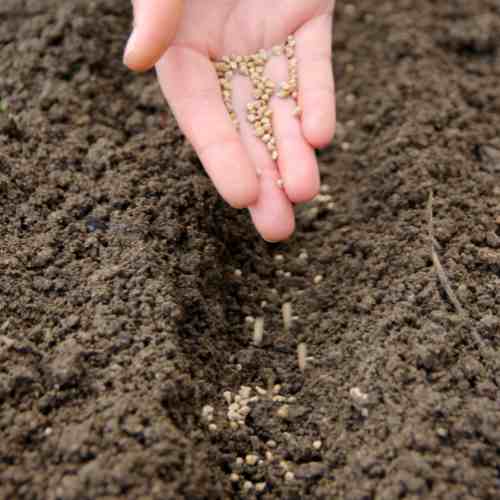
5. Water Wisely
Watering radishes is a balancing act. Too much water can lead to root rot, while too little can make radishes tough and overly spicy.
Watering Tips
- Keep the soil consistently moist but not soggy. Aim for about 1 inch of water per week.
- Water deeply and evenly to encourage uniform root growth.
- During hot weather, check soil moisture more frequently, as it can dry out quickly.
6. Thin the Seedlings
Once your radish seedlings sprout and reach about 2 inches tall, it’s time to thin them out. This step is crucial to prevent overcrowding and ensure each radish has room to grow.
How to Thin Radishes
- Gently pull out the smaller seedlings, leaving the strongest ones spaced about 2-3 inches apart.
- Use scissors to snip seedlings at soil level if pulling them disrupts nearby roots.
- Don’t waste the thinned greens! Toss them in a salad or sauté them as a side dish.
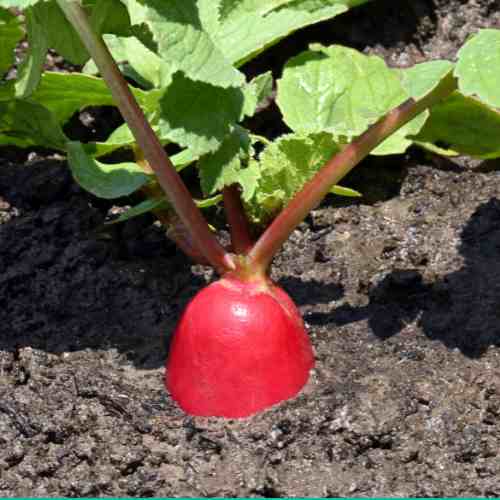
7. Watch Out for Pests and Problems
Radishes are relatively pest-resistant, but they’re not completely immune. A little vigilance can go a long way in keeping your crop healthy.
Common Issues
- Flea Beetles: These pests chew tiny holes in leaves. Use floating row covers to protect young plants.
- Split Roots: Caused by irregular watering. Stick to a consistent schedule to avoid this problem.
- Bolting: When radishes flower prematurely, it’s often due to heat stress. Plant early in the season to avoid this.
8. Harvesting Your Radishes
The moment you’ve been waiting for—harvest time! Radishes grow quickly, so keeping track of their progress is essential.
When to Harvest
- Most varieties are ready in 25-30 days. Check the seed packet for specifics.
- Gently pull one radish to test its size before harvesting the rest.
Harvesting Tips
- Harvest radishes promptly. Left in the ground too long, they can become woody or overly spicy.
- For daikon and larger varieties, use a garden fork to loosen the soil before pulling to avoid breaking the roots.
9. Store and Enjoy
Fresh radishes are a delight, but if you can’t eat them all at once, proper storage will keep them crisp and flavorful.
How to Store Radishes
- Remove the greens, as they draw moisture from the roots.
- Store radishes in a plastic bag or airtight container in the refrigerator. They’ll stay fresh for up to a week.
- To revive slightly wilted radishes, soak them in cold water for an hour before serving.
Creative Ways to Enjoy Radishes
- Raw: Slice them thinly for salads or as a crunchy snack with hummus or dip.
- Pickled: Radishes make excellent pickles. Simply slice them and soak them in a brine of vinegar, water, sugar, and salt.
- Cooked: Roast radishes for a milder, sweeter flavor or add them to soups and stir-fries.
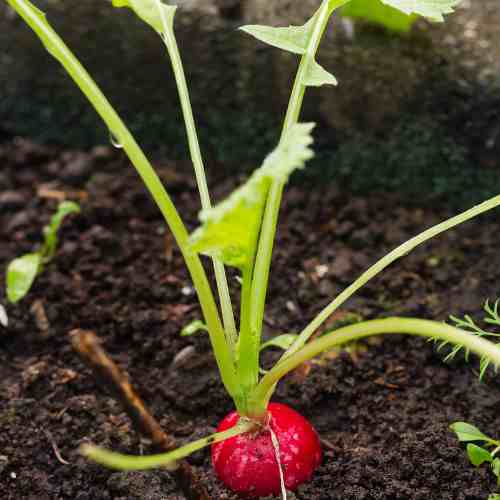
Conclusion
Growing radishes is awesome! They’re fast, easy, and offer endless culinary possibilities. By following these steps, you’ll enjoy a bountiful harvest of crisp, flavorful radishes that will make you the envy of every green thumb in town.
Get our Gardening Buddy and find veggies that fit your conditions best.
You Can Grow It!
Partners and Sponsors
We are forever grateful to our partners and sponsors. Send an email to team @ strongecho.com and let’s see how we can grow each other’s impact!





